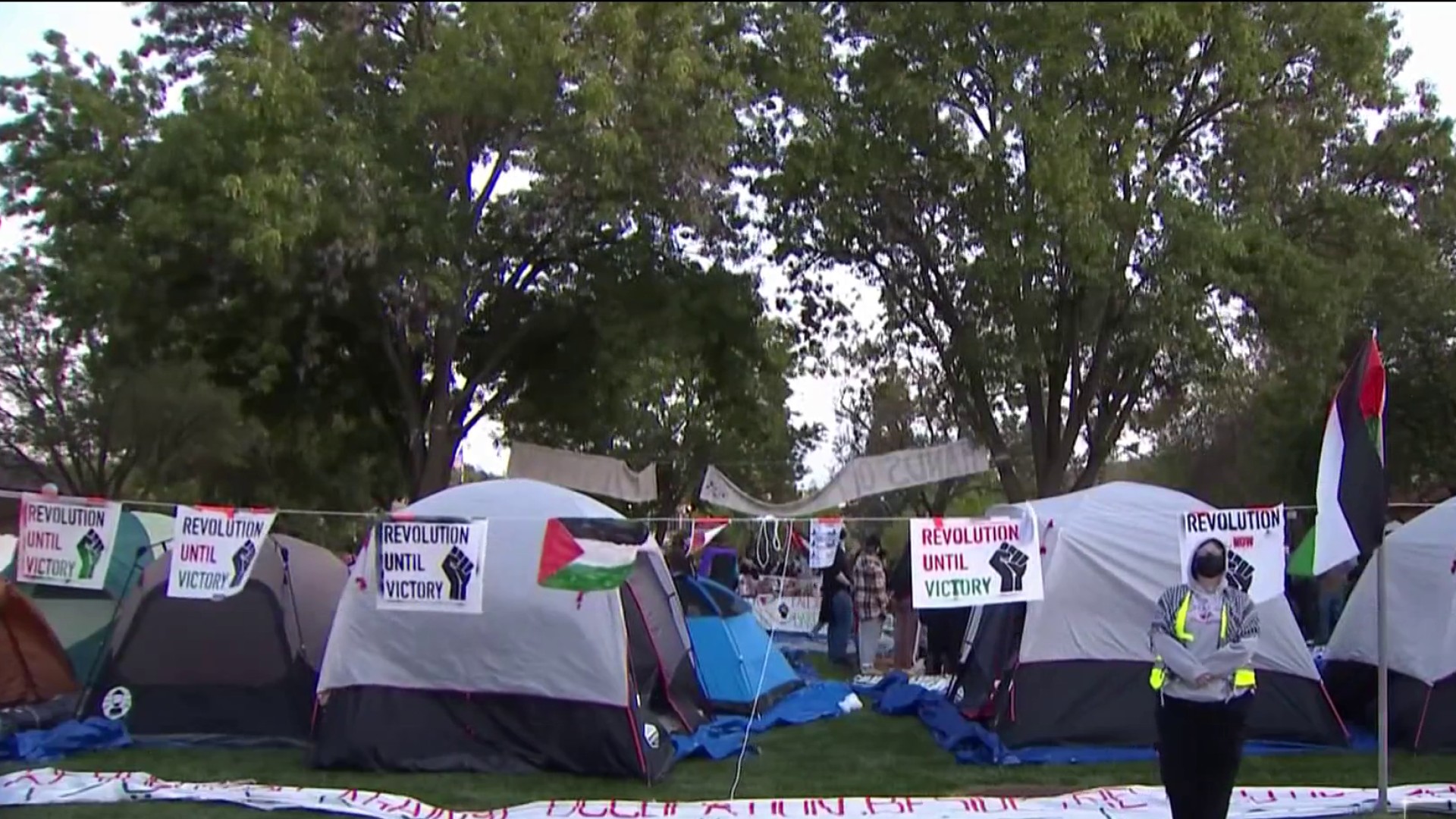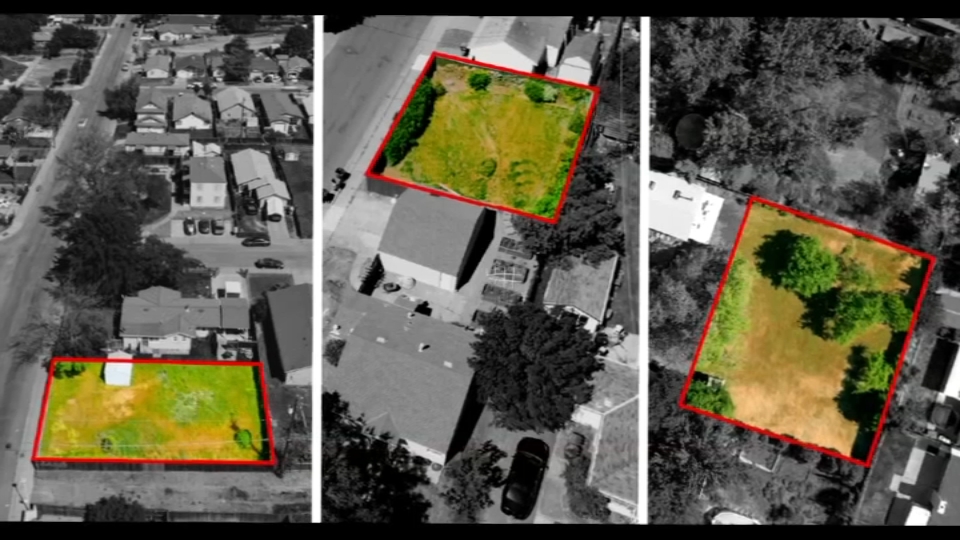Thirty years ago the bicycle community in the Bay Area was considered a fringe group. Today it’s an organized political machine that’s changing the way your neighborhood looks.
NBC Bay Area Travel and Transportation Investigative Reporter Elyce Kirchner examined how cyclists have become so influential on city streets and in city halls, and found that their strength is in numbers.
Dave Snyder, former president of the San Francisco Bike Coalition helped grow the organization from a handful of members in 1991 to at least 12,000 today. That’s large enough to be considered a political party in San Francisco. Just 4,000 more Republicans in the city voted in the last election.
Snyder is now the president of the California Bicycle Coalition, and says more than 20,000 people now belong to a regional bike coalition in the Bay Area.
“There is a pretty solid consensus that we need to do whatever we can, or at least we need to do a lot, to make the streets safer for bikes,” Snyder said.
David Chiu, president of the San Francisco Board of Supervisors and member of the San Francisco Bike Coalition, admits that the bicycle community is dialed in politically.
“I am not aware of a single elected official in San Francisco that think of themselves as antithetical or oppositional to what the biking movement is about and what the biking constituent wants,” Chiu said.
Recent bike-friendly policy changes prove that.
Local
The Board of Supervisors unanimously adopted Chiu’s proposal to make 20 percent of all trips in the city be made on a bike by 2020.
The latest SFMTA Bike Count showed that about 3.5 percent of all trips in San Francisco are made by bike.
In San Jose, bicycle advocates lobbied to reduce vehicle use by 40 percent by the year 2040. To help meet that goal, the city council approved eight additional miles of bike lanes downtown in addition to the 200 miles of bike lanes already in place.
In Oakland, 52 miles of bike lanes will be added to the existing 100 miles of bike lanes. In April, the Oakland City Council approved projects on East 12th Street, Broadway, MacArthur Boulevard and Ardley Avenue. Renee Rivera, president of the East Bay Bike Coalition told us the projects will create connections in the city’s bike network where there are gaps currently. The city’s Bike Master Plan, which was passed in 1999 and updated in 2007, calls for 218 miles of designated bike lanes total.
Region-wide over the next 25 years, people will see 2,000 miles of bike facilities connecting all nine Bay Area counties.
But not everyone is in favor of these changes.
Community activist and blogger Rob Anderson, who has long fought additional bike lanes in San Francisco, filed a lawsuit that held up the city’s plans for new bike lanes for years.
“It’s not just pro-bike, it’s anti-car,” Anderson said, referring to the bicycle movement.
He added: “When they started to take away traffic lanes on busy streets and parking spaces, I don’t think that’s sustainable. Sooner or later those chickens are going to come home to roost.”
Anderson also argues that building bike lanes won’t stop accidents caused by bicyclists.
According to 2010 and 2011 SFPD collision data, when bicyclists were at fault they were most likely to cause accidents by speeding, blowing through red lights and rolling through stop signs and crosswalks.
“City Hall is rewarding bad behavior on the streets of San Francisco,” Anderson said. “Awarding it politically.”
Transportation expert Jason Henderson believes the political reality is that the bike movement will grow even larger. He is writing a book on transportation politics in San Francisco, and believes the bike lobby is “definitely influential.”
“It’s is a tight-knit, well-organized well-lubricated machine,” he said. “They have staff that know how to reach out to the public.”
He said the movement has distanced itself from controversial events like Critical Mass, a 20-year-old monthly bike ride through the streets of San Francisco that is infamous for disrupting commuters. According to the SFPD, it cost the city $188,000 to monitor the event over the last year and a half.
Instead, the regional bike coalitions push more peaceful events such as the monthly Bike Party in San Jose, where participants travel en masse across a pre-planned route in the city. The volunteer-run event started in the summer of 2007 with the goal of building community through bicycling.
Henderson says the public message is that city cycling is assessable to everyone, not just young, athletic, men on messenger bikes who fight their way through traffic.
“They have moved away from a dialogue about confrontation and have moved into ‘bicycling is family values’,” he said.
But we found that despite adopting bike-friendly infrastructure in cities throughout the Bay Area, no study has conclusively shown that bike lanes will make local cyclists safer.
“I think what has happened is people have just defaulted to, ‘I know people want bicycle lanes,’ study after study shows that,” said Rebecca Sanders, researcher at UC Berkeley’s Safe Transportation Research and Education Center.
Sanders said that the principle of “safety in numbers” is a reason why more cycling may translate to fewer bike accidents and increased safety.
She also said that because there isn’t a lot of funding for bike studies, there isn’t much conclusive data on the efficacy of bicycle improvements.
“We are still lacking a really good rigorous study that would be able to do match lane comparisons with various bike lanes that would definitively say whether or not they improve safety,” Sanders said.
Snyder argues that bike lanes on San Francisco’s Valencia Street have reduced bike and pedestrian accidents. The project changed the street from four lanes to two lanes with bike lanes, and a median lane for left turns.
And Snyder believes that in the future many city streets will look like Valencia Street.
“A network of protected bikeways where you don’t have to worry about car traffic,” he said, “where you can ride along at a slow speed comfortably not worrying about cars all the time.”



